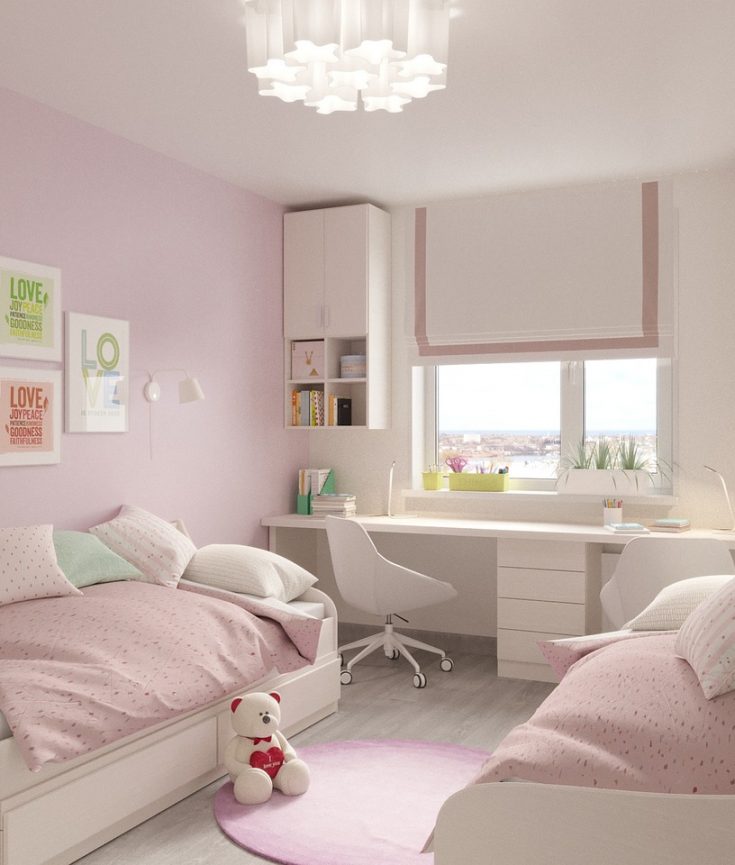Designing a room for a child isn’t merely about picking the right colors or furniture. It’s about creating a space that resonates with their imagination, ensures safety, and grows with them. As every child is unique, so should be their space – a magical realm that becomes a backdrop for countless memories, dreams, and adventures.
The Philosophy of a Child-Centric Design
Prioritizing Safety and Comfort
Safety comes first. From selecting furniture with rounded edges to ensuring non-toxic paint, every element of the room must prioritize the child’s well-being. Think of cushioned flooring, secured shelves, and accessible storage solutions that prevent tripping hazards.
Fostering Creativity and Imagination
A child’s room should be a canvas for their creativity. Incorporating interactive wall art, playful curtains, and dreamy lighting can craft an environment that fuels imagination. Design elements like thematic wall decals or glow-in-the-dark ceiling stars can transport them to other worlds, right from the comfort of their room.
Adaptable Spaces for Growing Needs
As children grow, their needs and preferences evolve. Opting for modular furniture and versatile storage can ensure the room is adaptable. Convertible beds, adjustable tables, and wall-mounted desks allow the room to transform seamlessly, echoing the child’s growth journey.
Diving into Inspirational Concepts
Thematic Dreamscape
From jungles to galaxies, themes can give direction to the room’s design. For an underwater theme, envision aquatic wall murals, shell-shaped cushions, and blue-toned lighting. Themes offer a narrative, wrapping the room in a story that sparks curiosity and adventure.
The Magical Nook
Every child deserves a special corner, a magical nook. It could be a reading corner with a canopy of fairy lights, a mini stage with curtains for the little performer, or a cushioned window seat to daydream. This personal space becomes their retreat, a zone where they are the heroes of their tales.
Interactive and Educational Elements
Children learn from their surroundings. Integrate educational elements in a fun way – think of wall maps, magnetic boards, or a chalkboard wall. From scribbling to solving puzzles, these interactive additions become tools for playful learning.
Integrating Modern Tech and DIY Projects
Smart Room Technologies
Children of today are growing up in a tech-driven world. Smart lights that change colors or voice-activated gadgets can make their space futuristic. Combine technology with safety, ensuring cords are hidden and devices are child-proof.
DIY Crafted Magic
There’s a unique charm in handcrafted elements. Engage in DIY projects with your child. Craft paper lanterns, create a wall of their artwork, or build a toy chest together. These personal touches don’t just beautify the space; they embed memories within.
Structural Integrity and Playful Aesthetics
Playful Structures
From loft beds to playhouses, integrating structures elevates the room’s fun quotient. Remember, just as a rebar bender ensures the structural integrity of buildings, ensure these structures are sturdy, safe, and in alignment with room dimensions.
The Color Symphony
Colors play a pivotal role in shaping mood and energy. While pastels induce calmness, vibrant hues spark energy. The trick is to find balance. Consider a neutral backdrop with pops of their favorite colors in decor, ensuring the room remains a serene yet joyful space.
Balancing Storage and Open Spaces
Invisible Storage Solutions
Children accumulate things – toys, books, crafts. Designing clever storage that camouflages with the room’s aesthetics ensures clutter-free spaces. Think under-bed drawers, back-of-door organizers, and multi-functional furniture.
The Gift of Open Space
Amidst all designs, ensure ample open floor space. It’s where they’ll build castles with blocks, chase imaginary dragons, or dance to their heart’s content. Open spaces offer the gift of freedom, a canvas for unscripted play and memories.
Conclusion
Designing a child’s room is an art and a responsibility. It’s about seeing the world through their eyes, where every corner holds potential for magic. As parents, guardians, or designers, we’re not just putting together a room; we’re crafting a universe where dreams take flight, where the robustness of structures meets the delicacy of dreams, and where every inch echoes with laughter, wonder, and growth. So, whether you’re integrating the strength of foundational tools like a rebar bender or the whimsical charm of a handmade craft, remember, in the heart of that room, magic unfolds every day.

